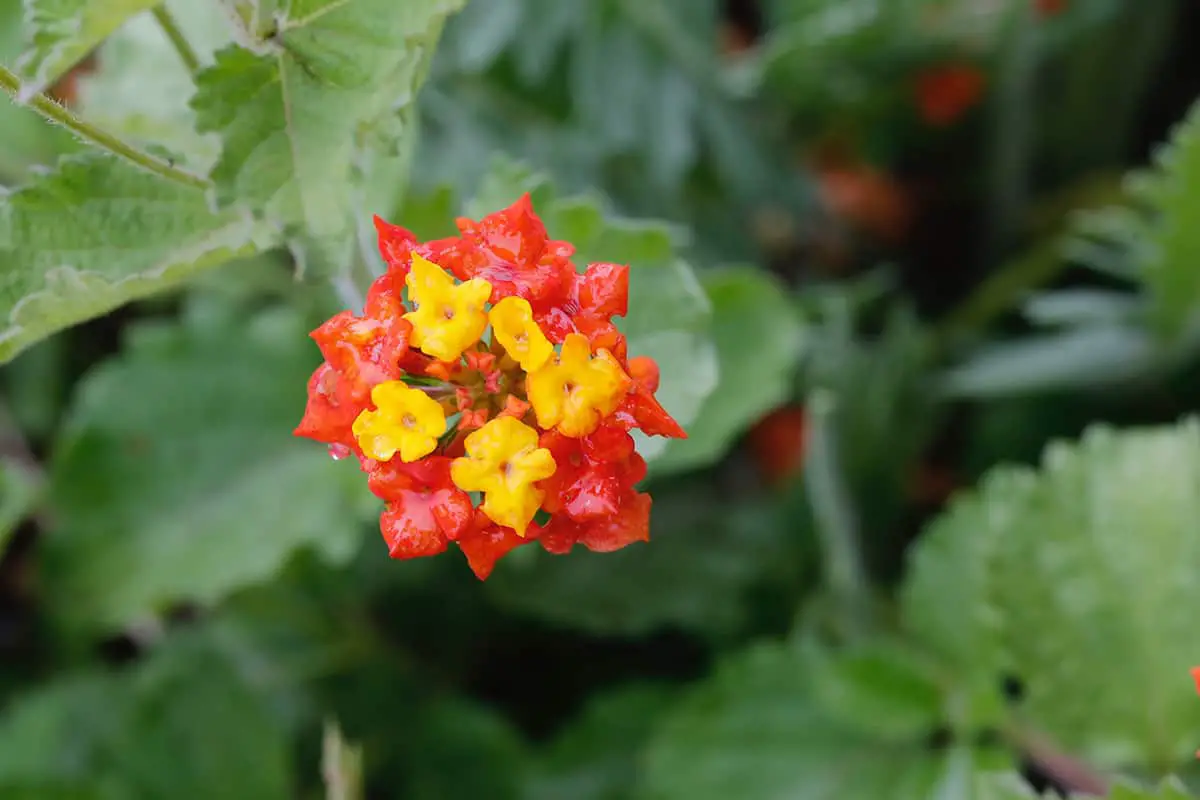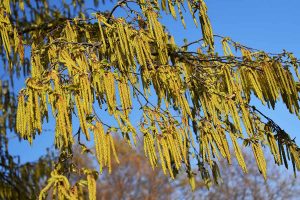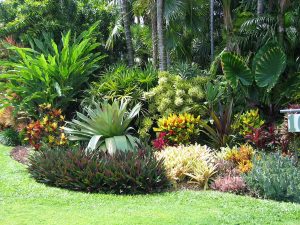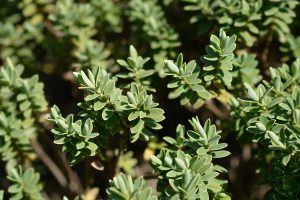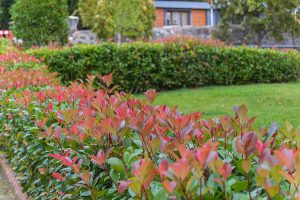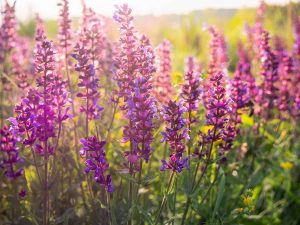Texas Lantana plants are commonly found in, you guessed it, Texas. They also grow natively across much of the southern US. These low-growing shrubs are incredibly easy to care for and make for excellent ground cover in rock gardens or between larger shrubs and trees.
They flower freely in bright and bold colors for a long period from spring to fall, adding color and interest to the landscape. Here we explore the Texas Lantana in more depth and explain how to best grow and care for this attractive deciduous plant.
- Botanical name: Lantana urticoides
- Common names: Texas Lantana, Calico Bush,
- Plant family: Verbenaceae
- USDA hardiness zone: 8 – 11
- Mature height: 2 to 5 feet
- Mature spread: 3 to 6 feet
The Texas Lantana is a small to medium deciduous shrub, which is native to southern North America. It grows plentifully across Mississippi, Texas, Louisiana, Arizona, and New Mexico. It is a low-growing plant that spreads easily, commonly having an ultimate width larger than its height.
This is a great plant to grow in the desert garden since it thrives in hot and dry climates, and its low-growing nature makes it a good choice for ground cover. It has serrated leaves in medium green that are heavily aromatic when crushed or bruised. These leaves cover the plant through spring and summer and drop to the ground in fall.
The Texas Lantana flowers prolifically over an extended period, producing dense clusters of brightly colored blooms from the middle of spring, right into fall. The tubular-shaped flowers are yellow at first, and then develop through shades of orange and finally to red as they mature.
Flowers are followed by fruits in the form of dark purple berries which are highly attractive to birds, however, they are poisonous to mammals, so be sure to keep them away from curious pets. Despite being deciduous, this plant retains interest throughout winter, because when the leaves fall they reveal the unusual bark of the shrub, which is gray and flaky.
Table of Contents
How to Care for your Texas Lantana
Light
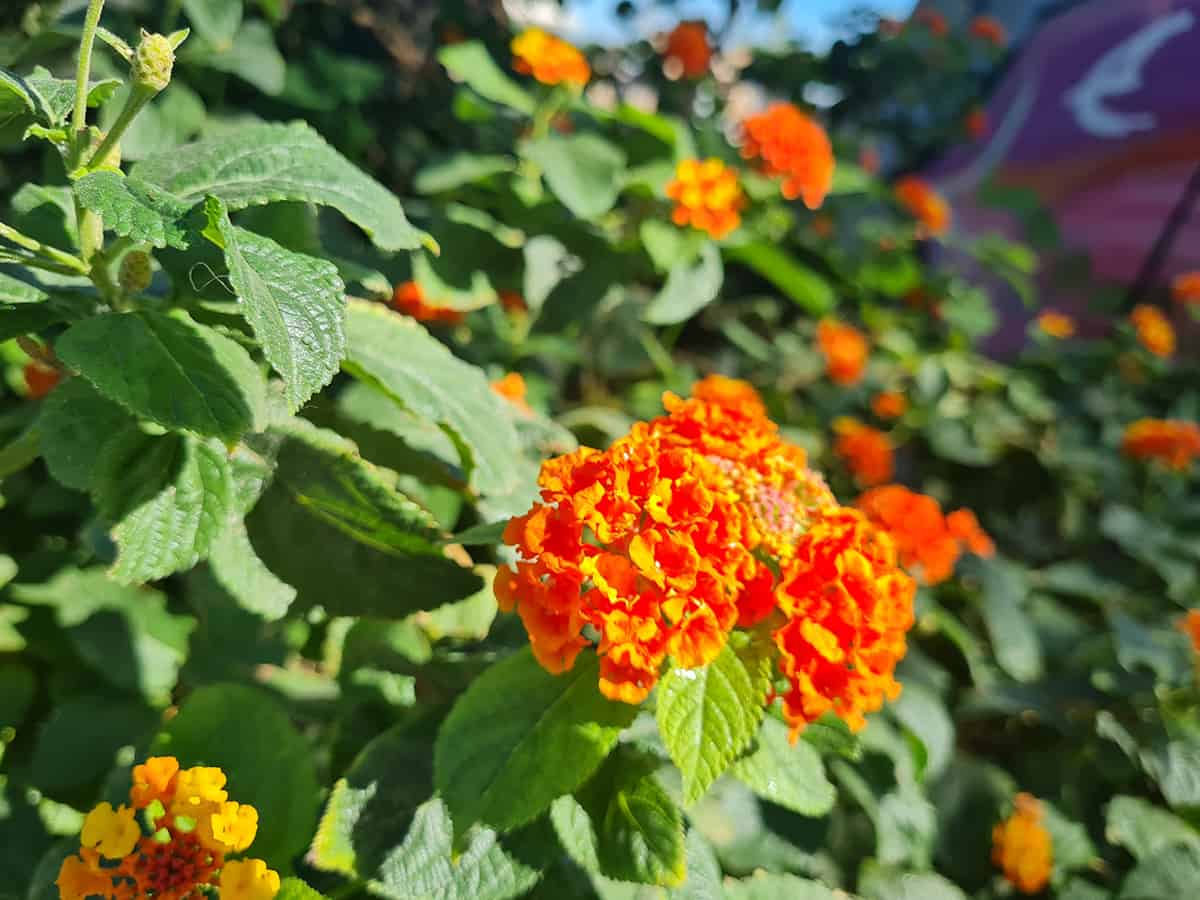
This is a plant that thrives in full sun, and requires between 6 to 8 hours of direct light each day. Avoid planting the Texas Lantana in shade, as this will dramatically reduce the plant’s flowering ability. Some light shade will be tolerated, but this is not preferred.
Soil
The Texas Lantana plant thrives in soils that are poor to average, so avoid amending soils to increase fertility or nutrient quality. The best types of soils for these plants are dry, sandy or gravelly soils, but they will also grow in other types of well-draining soils which can remain dry.
Since this is a plant that needs to be grown in dry soils, the ability of the soil to drain well is a high priority for the Texas Lantana. A well-draining, or free-draining soil, is ideal. Soils that drain well do not retain moisture that would otherwise be held against the soil.
Texas Lantana plants cannot grow in moist or wet soils, so a well draining soil will prevent the plants from being exposed to too much moisture since they will drain any rainfall away from the roots of the plant.
Water
The Texas Lantana has very low water needs. It is drought tolerant and prefers to be grown in dry soils, so you won’t need to water them at all during fall and winter, and only a minor amount of supplementary water will be required through spring and summer.
Once the Texas Lantana is well established, you won’t need to water it at all, and it will survive all year round on rainfall alone, and the moisture its roots seek out deep below the surface of the ground. These plants cannot tolerate wet or soggy soils, so they must be planted away from other plants which enjoy moisture.
Set your Texas Lantana in a rock garden or close to other plants that enjoy dry conditions. This will prevent it from being subjected to excess moisture when you water other plants with higher water needs.
Temperature

You can grow the Texas Lantana in USDA hardiness zones 9 to 11. The plant is extremely tolerant of high levels of heat and prefers to be grown in climates that remain warm throughout the year. Interestingly, this deciduous plant will remain evergreen when grown in the most southerly conditions, where temperatures do not drop dramatically through the winter.
Texas Lantana plants are not cold-hardy, so they are not suitable for growing in cooler climates unless they are grown in pots and brought indoors during the cold seasons.
Fertilizer
Fertilizing your Texas Lantana plants is not necessary, since these plants prefer poor soils. In fact, using fertilizer on this plant can actually be detrimental, resulting in a reduced amount of flower production. If you are happy with your low-maintenance Texas Lantana, then you can refrain from fertilizing it for the duration of its life.
It will do just fine. However, if you insist on getting some additional nutrients to this plant, you should use a balanced fertilizer, such as one with an NPK of 10-10-10 or 5-5-5. Apply this one a month throughout spring and at the beginning of summer, and then refrain from using fertilizer again until the following spring.
Less is certainly more when it comes to fertilizing Texas Lantana plants, so it is wise to use less fertilizer than advised on the bottle or dilute it down with water.
Texas Lantana FAQs
Is Texas Lantana toxic?
The berries produced by this plant are a good source of food for birds, who will devour them quickly. However, berries are toxic to mammals, including cats, dogs, rabbits, horses, sheep, cattle, and humans. If you have pets who are prone to exploring the garden with their mouth, then this may not be the best choice of plant.
You should also take care to ensure small children don’t investigate the Texas Lantana. Along with the berries, all parts of this plant contain toxins, including the leaves, stems, and roots. The toxin is pentacyclic triterpenoids, and it is damaging to the liver.
If a pet or child ingests a small amount, you may notice symptoms such as diarrhea, vomiting, labored breathing, and weakness. In cases where a large amount has been ingested, sensitivity to light is also a common symptom.
Should Texas Lantana be pruned?
When the leaves have dropped from the plant in the fall, they should be pruned back to a few inches from the ground. This is because flowers only bloom on new growth, so the growth from the last season will rejuvenate the following spring.
Cutting back the Texas Lantana in fall also helps to keep the landscape neat and tidy, and reduces the chance of pests taking up residence amongst the old growth.
Are Texas Lantanas easy to grow?
Texas Lantanas grow easily in the right conditions. If they are grown in well-draining soil, in a warm, dry, sunny environment, then they will grow with hardly any care at all. In these conditions, they thrive on neglect and are incredibly rewarding despite being very low maintenance.
